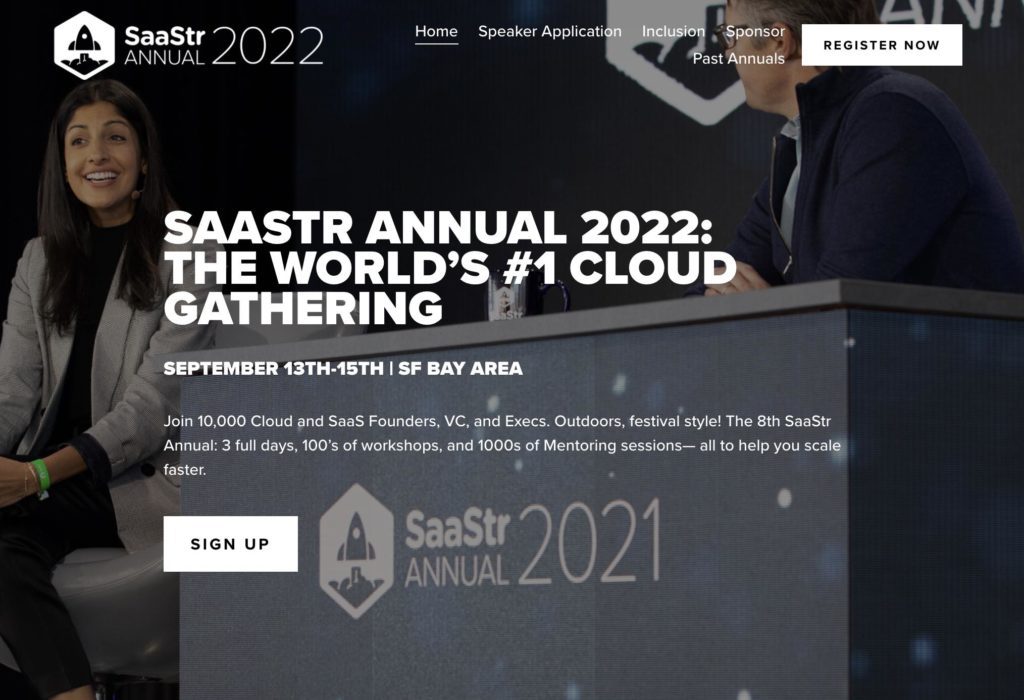In many ways, after just a few million in ARR, your job as CEO is to maintain momentum
With:
– better management
– fuel (capital)
– innovation (features)
– more awareness (marketing)And so you should obsess about any early signs of losing it
You’ll see it before others do
— Jason
BeKind
Lemkin 2⃣0⃣2⃣2⃣ (@jasonlk) January 31, 2022
We’ve talked a lot over the years at SaaStr of the different stages as you scale, and the first one you really hit is Initial Traction. At $1m-$2m ARR, when things start repeating. Not always evenly, or elegantly. But leads start coming in somewhat regularly, deals close somewhat repeatedly, etc. It gets even more repeatable once you have a mini-brand, once many prospects and customers in at least one niche segment have heard of you. That often happens as early as $3m-$4m ARR.
And after that, there is so much to do, but it really can be boiled down to join one thing — maintaining momentum.
After things start taking off, you’re really fighting two opposing forces — market pull and decay.
Market pull is a wonderful thing. Add in 110%, 120%, 130%+ NRR and things really are better after you hit Initial Traction.
And yet since it often takes a few years to get there, decay also sets in:
- Often, only some of the sales reps can really sell
- The competition takes notice, and starts entering your space
- The feature gaps that the early customers were OK with, the later ones aren’t
- You start to lose more and more deals to not have that key integration
- The market changes, e.g. to mobile, or AI, etc., and you didn’t change
- The competition raises a ton more money than you, and starts playing dominant strategy — and is just everywhere
- You don’t really hire the great VPs, and so leads stall. Or NPS gains stall. Or bookings plateau. Etc. etc.
Decay sets in. And if your NRR is high, it can be masked for a while. As your percent of bookings from existing customers grows, and for a while, hides the slowdown in bookings from new customers.
This is why as you scale, it’s super important to track your ratio of bookings from new vs existing customers. Ideally, the majority of your bookings always come from new customers, no how high your NRR. Be worried if that inverts. At scale, it may. 70%+ of Salesforce’s new bookings come from its installed base. But you aren’t Salesforce. Not yet.
So just a few thoughts here:
- As CEO, you have to be on constant alert here. You will see, smell, and feel decay almost before anyone else. And so you’ll have to push the team to do things, to build things, that don’t seem to have hugh ROI this quarter.
- Be careful abandoning the low-end of the market and/or a Free edition. These are highly effective ways to keep momentum going, even if your smallest customers become a smaller and smaller percent of your revenue. Datadog is at $1.2B+ in ARR now, and 80% of its revenue now comes from its largest customers. But it still has Free editions and supports the tiniest price points. They keep you in the game.
- A great VP of Product can help a lot. The best CPOs and VPs of Product are often just as aware of decay as you are as founders. The great ones are. If you have, lean in here and make sure they have enough support and story points to fight decay.
- Competition really does make you stronger. In SaaS, if you have an agile enough team, you can copy them. Do so, when they pull ahead. Your existing customers will wait 12-18 months for you to catch-up, if you tell them it’s coming, and you deliver.
- Don’t hide from it, or pretend it isn’t there. If you feel like your product is getting less competitive, it is. If you feel like you are behind hiring those key VPs, you are.
- Finally — you do have time. This isn’t B2C. Consumers cancel their Netflix and Disney+ subscriptions just 90 days after signing up just for a new hit movie. That doesn’t happen in SaaS. Your customers generally will stay for years. So while you shouldn’t hide behind 100%+ NRR, it does mean if you level up the team, level up the product, and more … you can stay in the game. Even if there’s a little more decay than you’d like.
Really, once you have something in SaaS, it’s up to you to stay in the game. Or not.
And as CEO, it’s in your hands. Spend every day, every week, every hire, every strategy session — maintaining momentum.
The post Blog: As CEO, Once You Have Something — Your Job Really is to Maintain Momentum appeared first on SaaStr.
via https://www.aiupnow.com
Jason Lemkin, Khareem Sudlow

